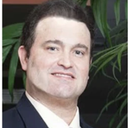I have lumps different in sizes on my breast. One of them is very close to the surface that makes it look red. i felt that one first which made me look for others. And i found 3 to 4 like that in each breast. I dont know how long they have been there. Im hoping its just dead fat and not something else. Its been a year since sx. Can the fat die now? I would appreciate an answer. Each about 2 cm maybe.
Answers (5)
From board-certified doctors and trusted medical professionals
Dr. Mats Hagstrom, MD (license on probation)
Board Certified Plastic Surgeon
Answer
More Breast Fat Transfer Questions
See all Breast Fat Transfer Q&AWE SEND PRETTY
EMAILS
What’s trending? Who’s turning heads? Which TikTok myths need busting? We’ve got you. No fluff, no gatekeeping—just real talk. Get our free, unfiltered newsletter.


